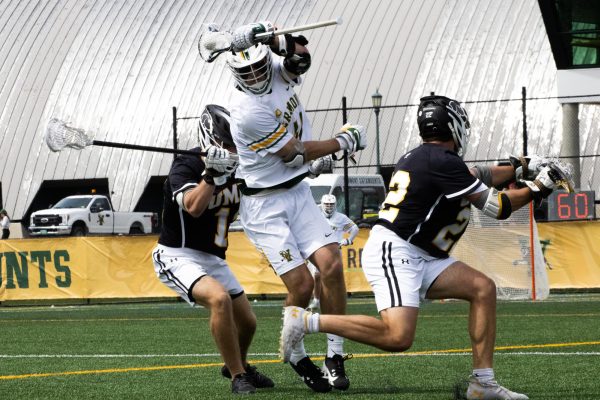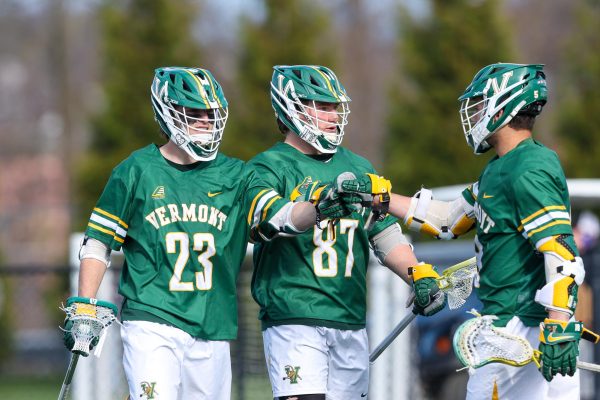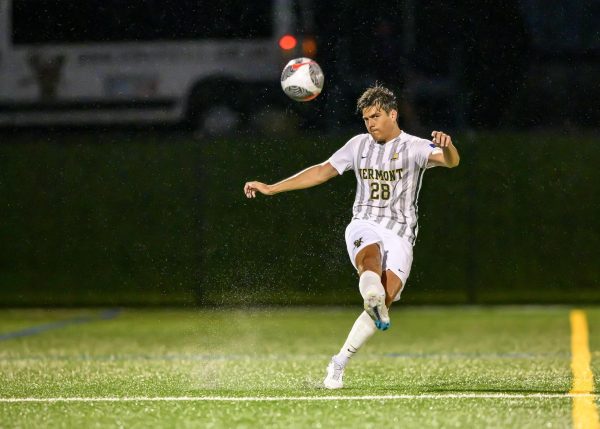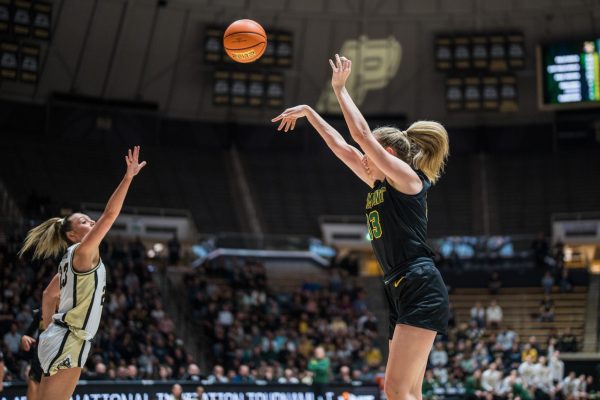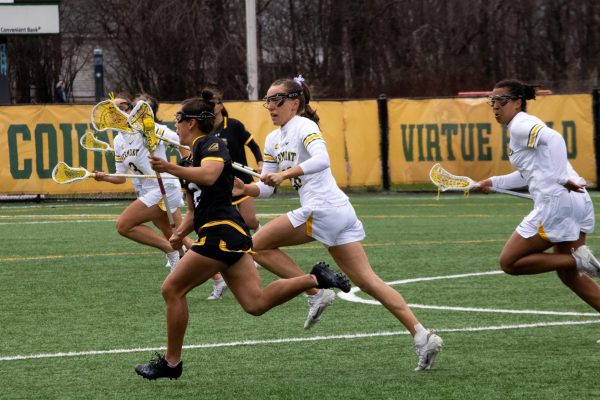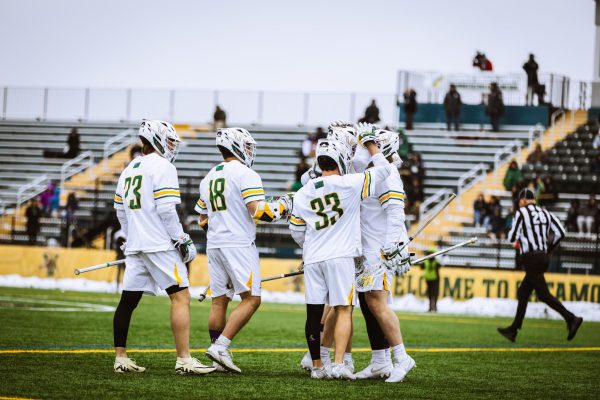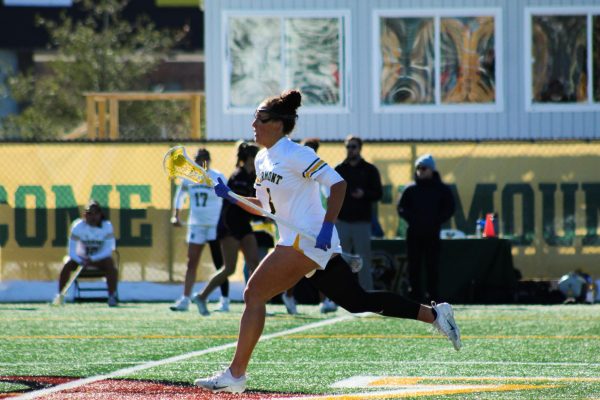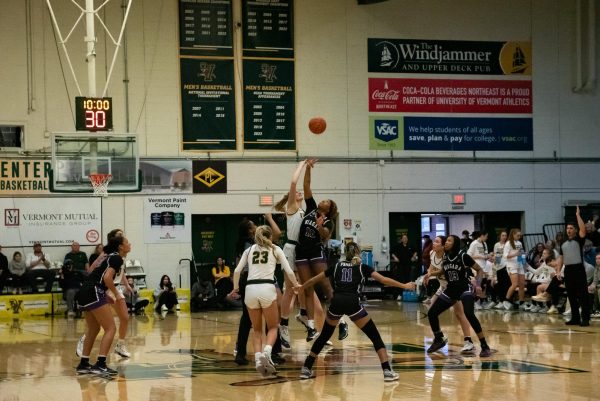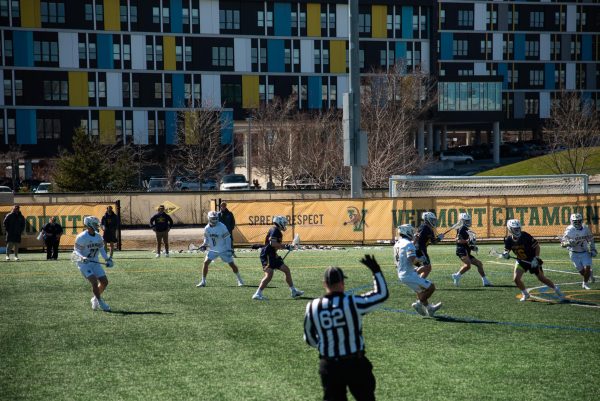Vermont cold doesn’t trip up track and field athletes
March 7, 2019
When heading down Dorset Street to go to the University Mall, one often sees members of the track and field team out for a long run.
With cross country in the fall, indoor track in the winter, and the spring track, distance runners especially train year round in Vermont.
If it’s the winter, it’s not uncommon to see an athlete slip on the questionably salted icy sidewalks. Nevertheless, with these running conditions, athletes who play sports that typically require warm weather still choose UVM.
Men’s track and field head coach Matt Belfield graduated from Catholic University in Washington, D.C. as a college jumper, and said that the cold is preferable for certain track athletes.
“We’re very popular among distance and middle distance runners because they’d rather be cooler and have this type of environment,” Belfield said. “But there’s no question that it impacts sprinters and jumpers who want to be outside in warmer weather.”
Belfield also said it’s common due to this widespread preference for northeastern schools to have strong distance running programs, while warmer schools are stronger in sprinters.
While sprinters and jumpers train inside on the indoor track during the winter, the small size of this track can frustrate distance runners who are used to training with much longer runs.
Additionally, javelin throwers like to be outside more than inside so they can see the javelin fly rather than hit a net, according to Belfield.
“Most of our people would rather be outside under any circumstances, we do have multiple options inside but you don’t want to run a lot of laps when you’re doing a twelve mile run,” Belfield said.
The wear and tear from running on just one indoor surface can also damage the joints and change running gait over time.
This leads runners to vary the surfaces they run on during an indoor run for best results.
Senior Maggie Mahoney is a distance runner from Massachusetts. She said she didn’t consider climate during the college search process.
“My home isn’t as extremely cold on the coldest days as Vermont, but I wasn’t considering climate when choosing my college,” Mahoney said. “I wanted to be in an environment where I would be challenged athletically in a program with good academics.”
However, she did say that training for long distance running on the coldest days can be a pain.
“It’s hard during indoor track running inside on really cold days,” she said. “Meeting 45 miles a week indoor can be hard because you can only do so many miles on the treadmill before you go crazy.”
She also said that runners will try to mix it up and run on the indoor turf and in both directions of the indoor track in order to avoid joint problems that can come from running on just one indoor surface.
Senior high jumper Will Lynch came to UVM after growing up in Burlington and said the winter weather isn’t that much of a factor during the track season.
“A good deal of the season is done by training indoors, so the weather doesn’t matter to me that much during practice,” Lynch said. “But as far as outdoor competition, it can be tough with the cold in the earlier parts of the outdoor track season but doesn’t take an enormous toll.”
He said that his experience from years in Burlington’s cold temperatures gave him an occasional advantage.
While UVM track is in the America East conference, they travel to other climates for invitational or regional meets.
“We had a meet a few years ago where it was snowing a bit, and I definitely noticed some other guys struggling with cold hands,” Lynch said.
Track and Field is a sport of resiliency, and the frost of Vermont is no secret.
“The cold isn’t usually a topic of discussion with recruits because when most people are doing their research, they’re going to know what the weather is like,” Belfield said. “We have more people that want to be here because of the weather than not.”







